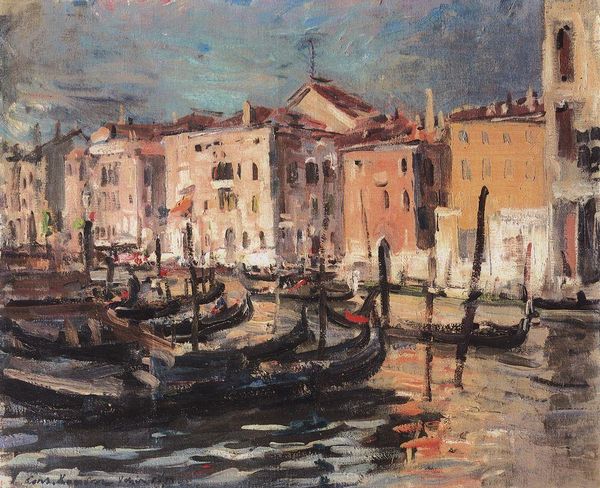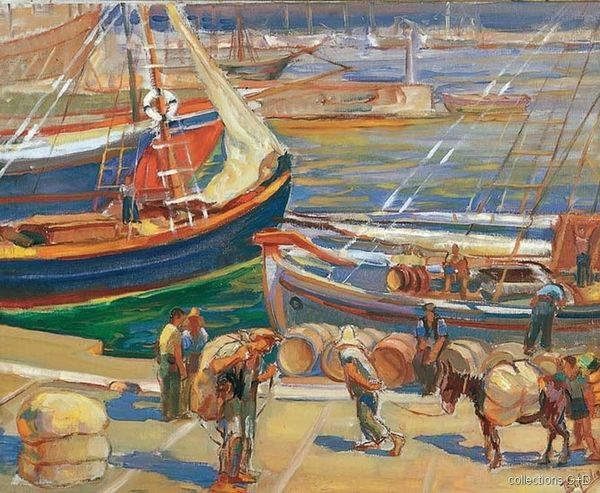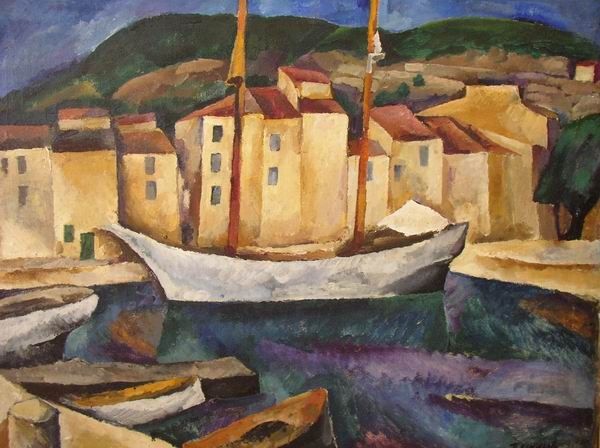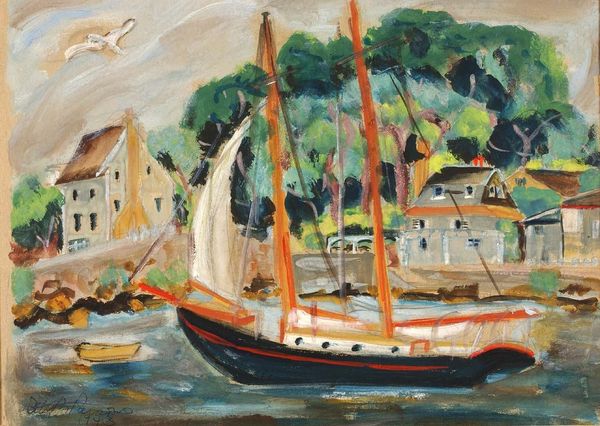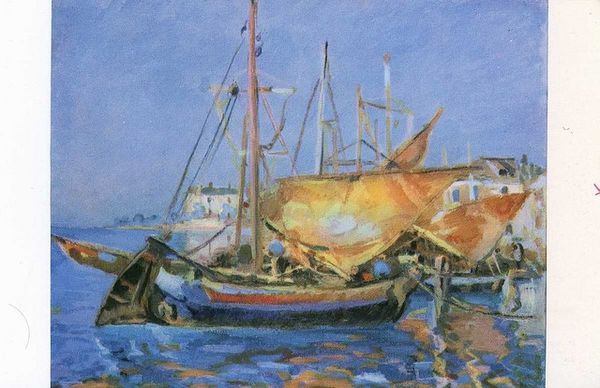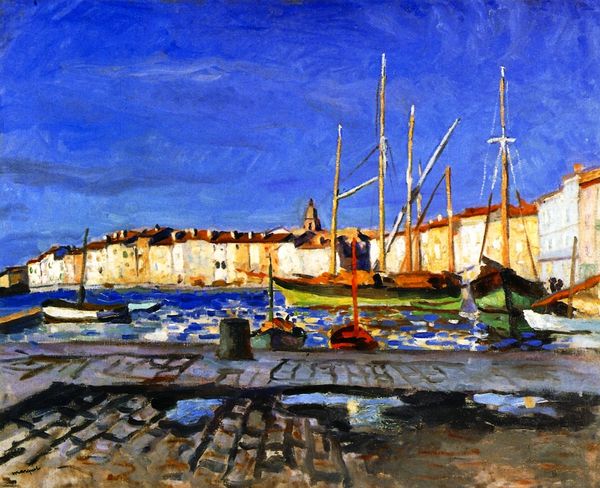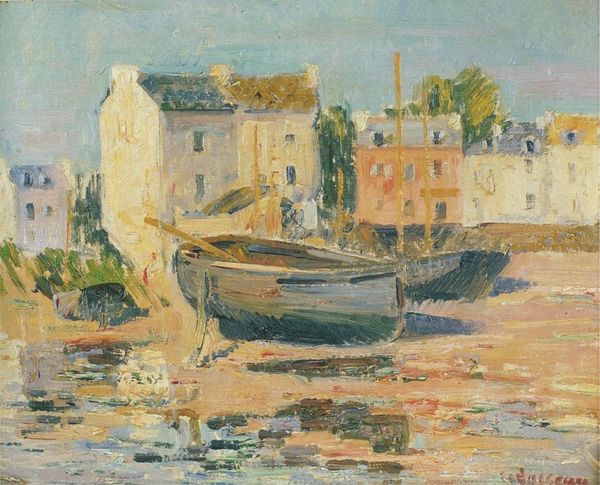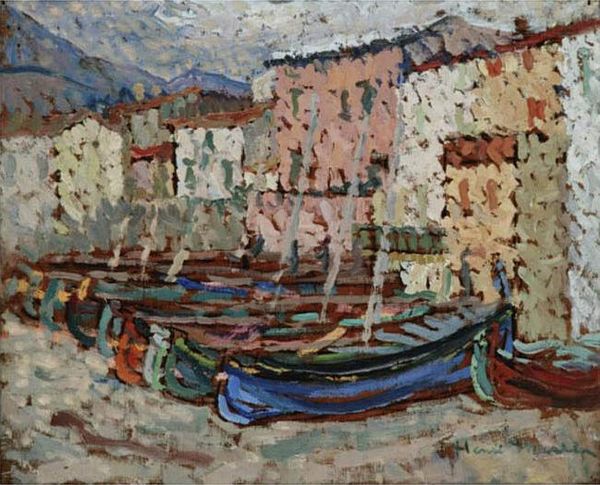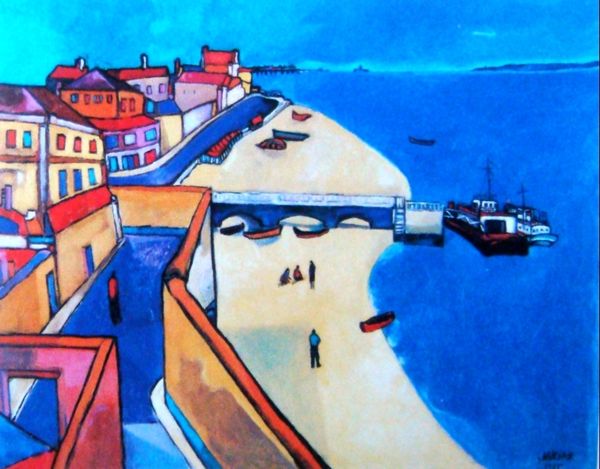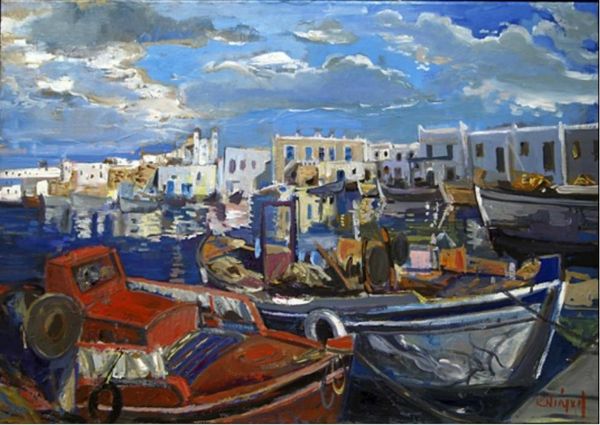
Copyright: Zinaida Serebriakova,Fair Use
Curator: The artwork we're observing is entitled "Collioure. Port with Boats," painted by Zinaida Serebriakova around 1930. It looks like a plein-air piece done perhaps in watercolor and potentially some oil pastel. Editor: It strikes me as initially melancholy. The heavy boats grounded on the sand, the muted colors, it evokes a sense of waiting, perhaps a stillness born from the economic hardships of the era. Curator: Absolutely. Serebriakova painted this during a time of significant social and political upheaval in Europe. Being a Russian émigré in France after the Revolution certainly impacted her artistic vision. This scene can be interpreted as reflecting the plight of many displaced people at the time, their lives and livelihoods stalled. Editor: Focusing on the pictorial elements, the composition guides the eye. The artist uses the repetition of boat shapes to create a rhythmic pattern across the horizontal plane. The masts punctuate the sky and echo vertically. It suggests stability through structured relationships. Curator: But that stability is illusory. Considering Serebriakova's personal history and the broader context of Russian diaspora, those grounded boats may represent a longing for a home that no longer exists, reflecting a profound sense of displacement. The post-impressionist handling almost anticipates surrealism, with the city almost blending into the sand itself. Editor: Semiotically, the boats function as signs – vehicles literally meant to navigate waters. Yet, here, they are earthbound, implying blocked movement. Considering Serebriakova’s facility for portraiture and interior painting, her choice to focus on exterior subjects shows something of the period. There's almost an abandonment of introspection to record her surroundings objectively. Curator: And the fact that she paints ordinary people – fishermen and workers – further underscores this focus on lived experience and class consciousness. Her style here is distinct; one might perceive some faint traces of Impressionism here, especially when remembering Serebriakova was raised in a family deeply connected to that tradition. Editor: By understanding how color and light operate within this specific scene, and using formalism to analyze how each art element connects, you’re ultimately left contemplating its meaning to our world today. Curator: Indeed, engaging with the historical context and Serebriakova's position as a female artist in a male-dominated field gives it additional resonance. This art continues to challenge us to question societal norms and power dynamics.
Comments
No comments
Be the first to comment and join the conversation on the ultimate creative platform.
